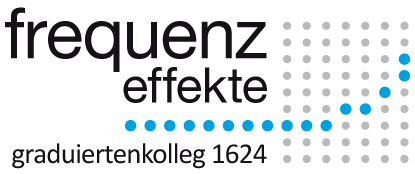Dynamical models in language change and processing
| Dozent(en) | Whitney Tabor, Lars Konieczny, Daniel Müller-Feldmeth |
| Ansprechpartner | Daniel Müller-Feldmeth |
| daniel.mueller@frequenz.uni-freiburg.de | |
| Termin | 23. - 27. April 2012 |
| Ort | Starkenstrasse 44, Konferenzraum, 1. OG |
Workshop mit und Vorträge von Whitney Tabor Gast von FRIAS und GRK Frequenzeffekte, 23.4. -27.4.2012 University of Connecticut , Department of Psychology and Cognitive Science Program Haskins Laboratories
Monday, 23.4. Workshop: ‚Interaction of perception, action and language: modeling approaches' 10-11 Lars Konieczny & Daniel Müller-Feldmeth: A connectionist model of situated language processing 11-11.30 --- coffee break --- 11.30-12.30 Whitney Tabor: Impulse Processing: a new proposal about the relationship among perception, action, and structure in language processing Raum: Starkenstraße 44, Konferenzraum, 1.OG
Dienstag, 24.4. 16-18 Whitney Tabor: Dynamical Models of Sentence Processing Raum: Institut für Informatik und Gesellschaft, Friedrichstraße 50, 2.OG (Raum 02009) Abstract: Dynamical systems theory studies systems that are described in terms of how they change. A number of constructs of the theory have proved relevant to explaining phenomena of sentence processing: for example, attractors, feedback effects, state space vs. topological level of description, fractals. I'll provide an introduction to each of these terms and offer evidence of its relevance to understanding empirical data. I'll then suggest that the importance of the dynamical approach as a whole is that it gives us insight into emergence or the way form comes into being in situations where it was not there before. Many central questions about online sentence processing are related to this phenomenon, including garden path effects, local coherence effects, and center-embedding effects. Emergence is also centrally related to phenomena of syntactic structure learning---in particular, the discovery of recursive patterning. One of the advantages of the dynamical perspective is that it offers insight into the encoding systems of connectionist networks (a kind of dynamical system) that have made accurate predictions about sentence processing phenomena but whose principles of organization have previously not been well understood. On the other hand, there is still much mystery surrounding emergence in sentence processing. I'll conclude by identifying some critical challenges.
Mittwoch, 25.4. 10-12 Whitney Tabor: Grammaticalization and Self-Organization Raum: Institut für Informatik und Gesellschaft, Friedrichstraße 50, 2.OG (Raum 02009) Abstract: There is a kind of language-internal evolutive change that is described by terms such as "grammaticalization", "lexicalization", and "constructionalization", among others. I suggest that the theory of dynamical systems, and in particular, the phenomenon of self-organization, offers some particularly helpful insights into these phenomena. Some key claims according to this view are: quantitative changes (like frequency changes and subtle semantic shifts) are actually fine-grained structural changes; there is an important role for feedback in the development of grammatical forms (social forces, among others, play a pivotal role); there are relationships of similarity that cross currently recognized structural boundaries, and play a central role in the flexibility of the language system. I suggest, in fact, that the study of grammaticalization and related language change phenomena may help us understand the interplay between stability and flexibility in complex systems generally. |


